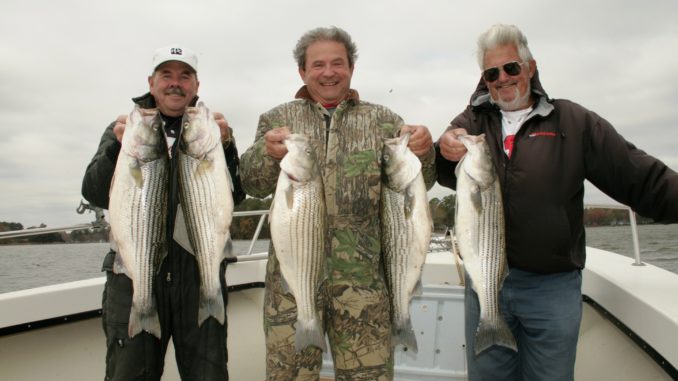
Percentage of keeper-sized fish improves dramatically
Catching big numbers of stripers at Lake Marion has been the norm for guides and most experienced striper fishermen, but catching keep-sized fish has been an issue.
With the recent colder weather, however, catching bigger stripers has improved for guide Don Drose.
“Fishing is simply great right now,” Drose said. “I don’t think I’ve ever seen so many stripers, and now that the water temperature is dropping we’re catching more keeper fish. On a typical day now, we’ll catch from 50 to 100 stripers, with a lot of them just under the legal size of 26 inches. But we’re putting some quality fish in the cooler now as well.”
Drose (803-478-2536) begins each day looking for schooling fish, following the gulls. Bucktails and Hopkins spoons will produce, along with live bait.
“The gulls will help guide me to where the big pods of baitfish are early in the morning, then, it’s a matter of just staying on the shad to keep catching stripers with live bait,” he said.
Drose is concentrating on the area from Wilson Dam up the lake about two miles.
“I’ll also consistently find stripers in Wyboo Creek,” he said. “The trick is to find the big school of shad, whether they are in the creeks or in the big lake.”
“One way I target big stripers is to fish deeper than where a lot of the smaller fish are marked,” he said. “I’ll find a big school of shad, and often, I will mark stripers well off the bottom in the water column around the baitfish. If I drift over that area with my bait set where I see most of the fish, I’ll occasionally catch a keeper-sized fish.
“I let my bait go all the way to the bottom, almost always deeper than 20 feet, and usually down to 28 to 30 feet and just crank the bait up a couple of turns off the bottom. That’s where the bigger, keeper-sized stripers are caught. We’re catching a good number of large fish doing this.”
Drose is using threadfin shad as his primary bait; he said this year there’s a great crop of threadfin in the 3-inch and larger class, ideal for his style of striper fishing.
“One key is to use a really small hook to let the bait look alive,” Drose said. “I use a L141F-6 Eagle Claw Kahle hook. It’s small, but it will hook and hold a striper and will enable those small threadfin shad to swim very naturally. It’s important for big fish to have that bait act natural.





Be the first to comment